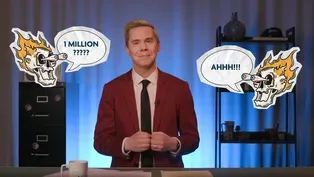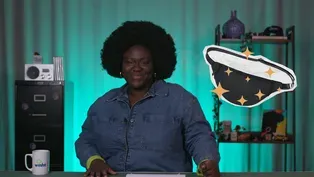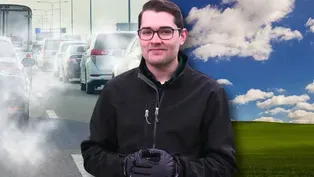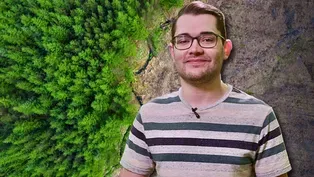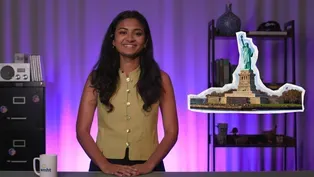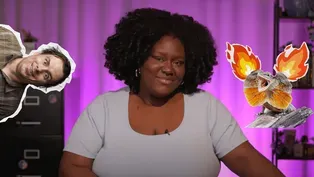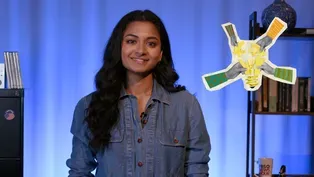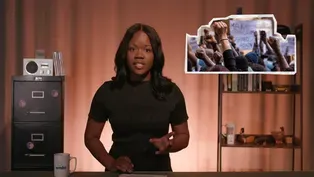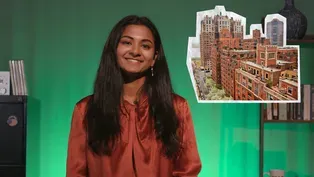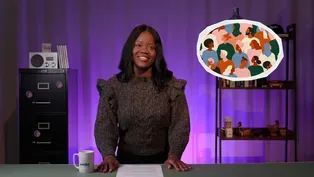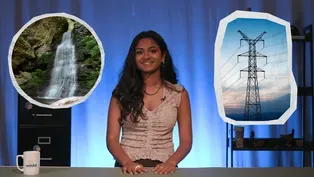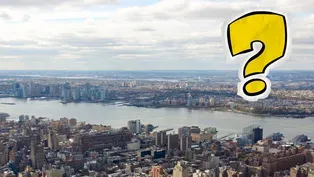
NY& State Government
Clip: Special | 10m 5sVideo has Closed Captions
Learn about the structure and function of New York's State Government.
On this episode of NY&, we break down the structure and function of New York's State Government.
New York NOW is a local public television program presented by WMHT
Support provided by the New York State Education Department.

NY& State Government
Clip: Special | 10m 5sVideo has Closed Captions
On this episode of NY&, we break down the structure and function of New York's State Government.
How to Watch New York NOW
New York NOW is available to stream on pbs.org and the free PBS App, available on iPhone, Apple TV, Android TV, Android smartphones, Amazon Fire TV, Amazon Fire Tablet, Roku, Samsung Smart TV, and Vizio.
Providing Support for PBS.org
Learn Moreabout PBS online sponsorship(gentle hip-hop music) - Welcome to "New York and State Government."
I'm your host, Alexis Young.
As I've told many a lawmaker just before an interview, this is my first job out of college and my first stab at political reporting.
So, of course, it's in New York, a state whose political arena can frequently make national headlines.
And when it comes to learning how government in New York works, there's enough buzzwords, acronyms, and rules to fill the capitol building itself.
But it's important for y'all to learn, because if you want your voice heard, you need to know how the system works.
So I thought I'd help y'all by helping myself.
Welcome to your crash course on New York State Government.
Class is in session.
The New York State Government is comprised of three branches, the legislative, executive, and judicial branches.
Let's start with the legislative branch.
The main purpose of the legislative branch is to develop bills that, with the governor's signature, become laws, those pesky things we have to follow to keep our society from collapsing.
Like the United States Congress, the state legislature is bicameral, meaning that it is comprised of two chambers.
In New York, we have the Assembly and the Senate.
These two bodies conduct a legislative session in Albany's capitol building, a beautiful, labyrinthine construct full of people telling me I'm not allowed to film there.
- [Sped-Up Voice] Sorry.
- The Assembly and the Senate work with an immense amount of legislation, so they use committees to make the process more efficient.
Committees are comprised of smaller groups of legislators that develop a level of expertise on specific subjects like education, labor, and health.
Committees function as a way to get more knowledgeable eyes on bills before they get a full floor vote.
The process of a bill becoming a law could be a video all on its own, so I made one.
Check it out in the description of this video.
And yes, before you ask, I did get permission to film in the places I did for that video.
Well, I just didn't get kicked out, that is.
When it comes to getting your voice heard, the legislature is the most representative branch in the state government.
We asked Assemblyperson Patricia Fahy why that is and why it's important.
- We consider ourselves the People's House.
I represent, in any given year, about 35,000 voters.
I run every two years.
So that means, because it's two years, it means you're always in the community.
You're always trying to be visible.
My calendar is full of constituent meetings and advocacy organizations.
So we're closer to the ground, if you will, to make sure that we have that pulse of the people.
It is the closest we get into the community, of the three branches.
- To learn more about who represents you in the legislature, check out our link in the description.
(relaxing hip-hop music) The second branch we'll look at is executive.
While not as representative as the legislative branch, the executive branch has four elected positions, the governor, the lieutenant governor, the attorney general, and the very weirdly spelled comptroller.
The governor is head of the executive branch and is considered to be the most powerful official in the state and for good reason.
Any bill passed by the legislative branch needs to be signed by the governor to officially become a law.
If the governor doesn't like the bill, they can cancel it with a veto, though this can be overturned with 2/3 of support from both the Assembly and the Senate.
The governor also has a huge influence over the state budget.
In fact, the governor proposes their idea of what they think the state budget should be and then works with the Assembly and Senate to reconcile and create one unified budget for the year.
It's an excruciating, month-long process that happens every March, depriving our elected officials from being able to kick back and watch March Madness.
The governor also appoints or nominates all but a few of the heads of our state agencies.
These are departments that focus on different elements of our society.
For example, the Department of Agriculture and Markets works to support New York's farmers and agricultural industries.
State departments can also enforce laws passed by the legislature.
For example, the Department of Environmental Conservation regulates pollution that can be harmful to the environment and human health, making life hard for the folks over at Jim's Asbestos Emporium.
Let's speed run the rest of the elected executive positions.
The attorney general is the chief legal officer of the state who serves to protect the rights of New York citizens and has the power to sue organizations or even other state officials that infringe on those rights.
The comptroller is the chief fiscal officer.
They keep an eye on state finances and can use audits to help identify wasteful spending and financial corruption, though they do not have the power to prosecute.
Last, we have the lieutenant governor.
You can think of them as the vice president figure of the state.
The Lieutenant Governor takes charge in the case of resignation, absence, or death of the governor.
Phew.
I really meant that phew.
I really meant that.
That's all we got for the executive branch.
Let's move on to the judicial next.
(gentle electronic music) New York's judicial branch is comprised of the Unified Court System, which, despite the name, is sprawling.
The courts have a wide range of responsibilities, including handling criminal cases, civil cases, and settling various forms of disputes.
They also interpret laws passed by the legislative branch.
To help explain the structure and function of the court system, we spoke with Judge Leslie Stein, former associate judge of the court of appeals and current director of the Government Law Center at Albany Law School.
- There are courts starting from the very local level, like city courts and town and village courts, and then there are courts on the county level.
And those, by the way, are all trial courts.
It's where you go to have your case heard and to have the facts decided by by a judge.
Those are some civil, some criminal, and of course, family court.
And then you get up to the supreme court level.
And the supreme court is the highest trial court of general jurisdiction in the State of New York.
It's supreme because it has, really, the most jurisdiction to decide issues, to decide facts and law.
So that includes just about everything you can think of that a person might have to go to court for.
- As Judge Stein said, courts at the town, city, and county level tend to handle criminal cases, civil cases, and family cases.
The state supreme court can handle these issues as well.
But it's also the initial court level where laws can be interpreted, clarified, or deemed unconstitutional.
Despite its name, the state supreme court is not the highest-ranking court in the state.
Within the supreme court are the appellate divisions.
- There are four appellate divisions in New York State, and that is the first level of appeal for most cases.
But that is the court where you wanna go appeal what a trial judge has decided.
And you can appeal virtually anything that you think is wrong to the appellate division.
- And at the tip-top of the hierarchy is the court of appeals.
- The court of appeals cannot decide facts.
The court of appeals has to rely on the facts as they have been determined to be by the trial courts and by the appellate divisions in some cases.
And so the court of appeals decides only law and how the law applies to particular situations.
And what the court of appeals does applies to the entire state.
If the appellate division in Albany decides something and the appellate division in Buffalo or New York City decide it differently, you may have different rules applying in different parts of the state.
And that's one of the reasons why the court of appeals may get involved and say, "We need to clarify this so that everyone in the state is subject to the same laws."
- Due to the nature of the system, the judicial branch is more removed from civic engagement than the other two, though many judges, including those in the supreme court, are elected to their positions.
These are individuals who make decisions that directly impact the lives of people throughout New York.
For this reason, it's important to pay attention and participate in judicial elections.
(peaceful hip-hop music) So there you have it.
We've just crammed a semester's worth of material into a relatively short video.
We hope you use this information as a building block to learn more about the systems in New York that shape our lives.
Thanks for tapping in.
I'm Alexis Young, and until next time, be well, be good, and stay informed.
We pride ourselves on being a trustworthy source of information, and all our sources will be cited in the descriptions of each episode we post.
Video has Closed Captions
Explore voting in New York State, including turnout, campaign finance, access, and more. (9m 31s)
Video has Closed Captions
Alexis Young provides an in-depth look at New York's abortion laws. (8m 13s)
Addressing Air Pollution in New York's Communities | NY& Climate
Video has Closed Captions
Join host Dana Wright as he explores air pollution's effect on New York's communities. (8m 44s)
Can We Make NY's Forests Healthier? | NY& Climate
Video has Closed Captions
Host Dana Wright looks at ways we can manage and improve the health of our forested lands. (7m 59s)
Is Climate Change Impacting NY's Birds? | NY& Climate
Video has Closed Captions
Learn why New Yorkers love birds, and why we need to help them in the face of climate change. (9m 10s)
Video has Closed Captions
Raga Justin explains the various forms of international movement to NY. (13m 12s)
Video has Closed Captions
Learn to analyze information sources with Alexis Young. (6m 45s)
Video has Closed Captions
Learn about the basics of organizing, its importance, and the potential community impact. (8m 38s)
Video has Closed Captions
Explore New York's dialogue about policing in the state. (14m 55s)
Video has Closed Captions
Discover NY tenant rights and housing laws that could shape your future. (12m 50s)
Video has Closed Captions
Join Shantel Destra as she demystifies running for local office. (9m 3s)
Video has Closed Captions
Exploring New York's climate goals, landmark laws, and advocacy efforts. (10m 50s)
What Does Climate Change Mean for the Hudson River? | NY& Climate
Video has Closed Captions
Explore the Hudson River's climate and pollution challenges and efforts to improve it. (8m 42s)
Providing Support for PBS.org
Learn Moreabout PBS online sponsorshipNew York NOW is a local public television program presented by WMHT
Support provided by the New York State Education Department.
